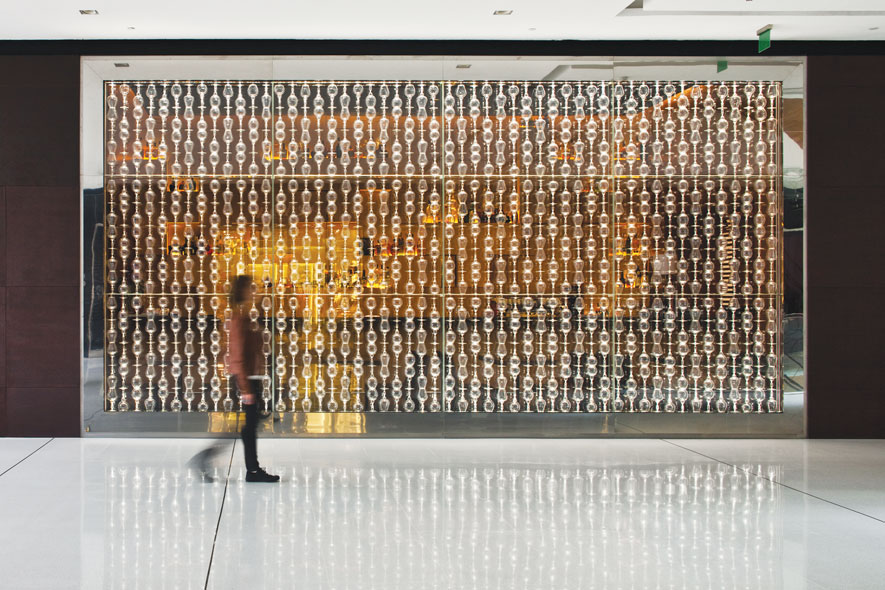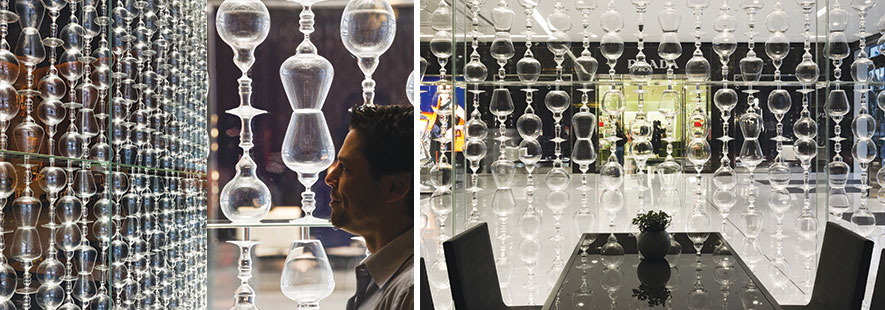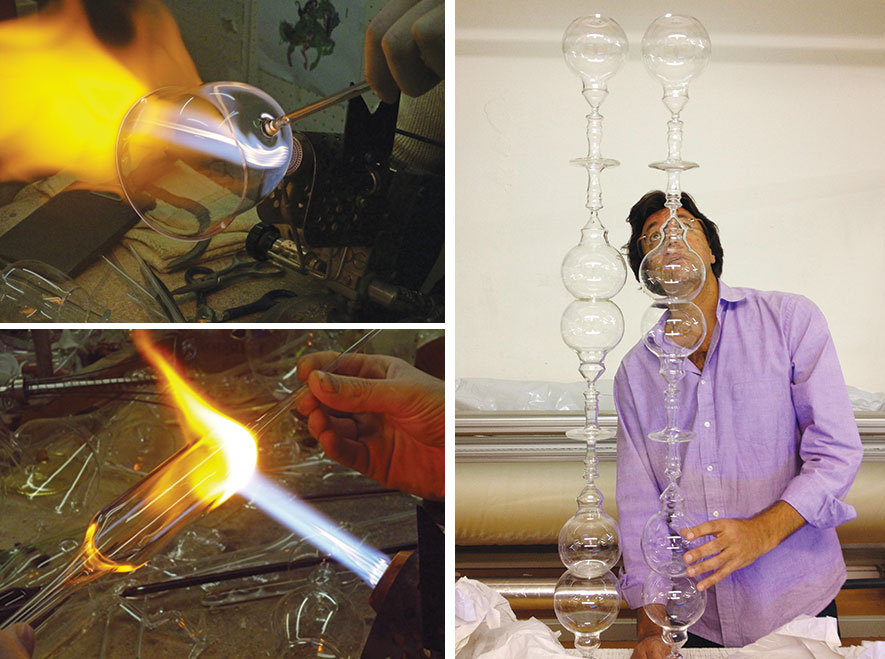
The Blown Wall Concept
CARBONDALE's expertise is creating architectural designs that are customized specifically to each Client. "Tre-Bicchiere" translates from Italian to "3 Glasses" and is a restaurant owned and run by 3 Restaurateurs in Sao Paulo Brazil. Each of the 3 owners plays an important role in creating a very "inclusive" dining experience, the Chef, the Sommelier and the Maitre d'. CARBONDALE looked to capture the name and identity of the restaurant, the personality of the 3 owners and serve as an iconic feature for restaurant's image. It was important the Facade of Glasses obscured views into the restaurant from the exterior but maintain a blurry veil to prevent diners inside to feel over-exposed to passers-by. We created a mirage-like perception to convey the magical quality of what is a high-end dining experience.
Creating the Blown Glass Wall
CARBONDALE took profile picture of the 3 restaurateurs owners, then transferred the highlighted silhouette to the Murano craftsmen. The glassblowers studied a number of techniques too shape the three elements that make up the glasses; the base, stem and bowl for each of the three profile types to create a wooden guide. Once a guide was perfected, the 950 glasses were hand blown and crafted using the guide for continuity. There are small difference is each glass which adds handmade quality of the installation.With the arrangement and density of the glass wall pattern, CARBONDALE studied to find the right balance of transparency and translucency. The most important factor for adjusting the degree of visibility came from the LED lighting integrated in the façade frame to wash the glasses laterally with light. The LED lighting intensity adapts and adjusts with light sensors according to the changing amounts of natural light.
















